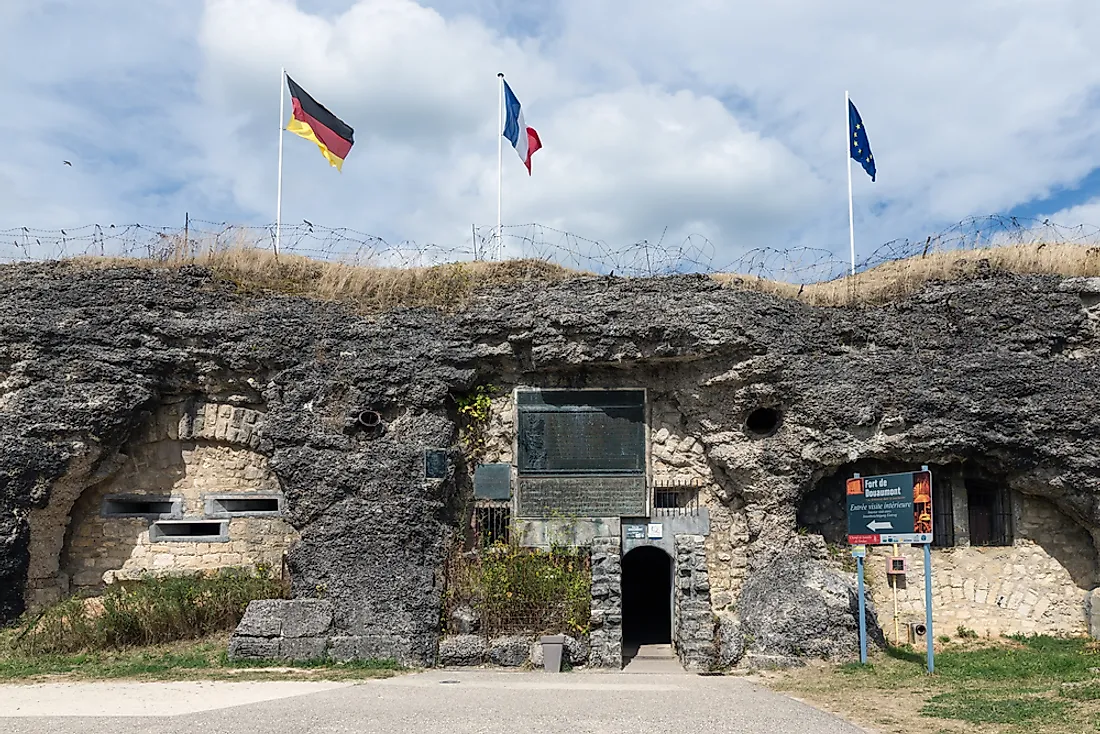The Battle of Verdun

The Battle of Verdun occurred between the German and French armies, and took place around the city of Verdun-sur-Meuse in North East France from February 21 to December 18, 1916. This battle was the largest, longest, and among the most important battles in First World War on the Western Front. The war resulted in the deaths of about a quarter of a million people and left another half a million injured. The Battle of Verdun, popularized by the phrase “ill ne passeront pas” meaning “they shall not pass,” brought much destruction and caused people to think of it as the war to end all wars.
History of Verdun and Background of the Battle
In 1648, the Peace of Munster treaty awarded Verdun to France. Due to the city’s strategic location on Meuse River, it played a crucial role in the defense of its surroundings. In the 1870s, Séré de Rivière devised a programme to build two lines of fortresses from Belfort to Epinal and from Verdun to Toul which were defensive screens and also enclosed towns which, initially, were to be bases for counterattacks. The forts were engineered to be more resistant to artillery in the 1880s and overlooked each other to provide mutual support when needed. The outer forts had 79 guns in shell-proof turrets, and 200 light guns and machine guns to protect the trenches around the forts. From 1903 onwards saw the addition of more guns, a concrete banker, and other defensive machinery.
The Battle of Verdun
The German front began the war on February 21, 1916, through a ten-hour artillery bombardment by 808 guns followed by an attack by three army corps. By February 23, the German army had advanced into French territory and captured two French battalions without the knowledge of French leadership. As communication deteriorated, the French high command realized the seriousness of the attack. The French troops retreated to Douaumont village, which the Germans later captured on March 2. In the months following, the Germans captured three other French villages to the east and west of Verdun. At this time, casualties on both sides were many. As the German regiment advanced into French territory, it shelled the French defenses with poisoned gas in an attempt to capture Fort Souville, however the attempt failed. By October 21, 1916, the German troops became exhausted while their rejuvenated French counterparts launched a counterattack. The French bombarded Fort Douaumont and recaptured it on October 24. The final French counterattack drove the Germans to the starting point from where they retreated.
Aftermath
The war degraded the small areas of land on which the battle took place. Shells created large pits, the forests turned into wood by constant artillery fire, and many people died. Even though the German troops outnumbered the French troops, they suffered more casualties. The battle, also known as “Mincing Machine of Verdun,” became a symbol of French determination and fortification it also became the most preferred method of defense along French-German border. Verdun is a memorial site as a battlefield and to commemorate the sacrifice, suffering, and death of citizens. So bad was the battle that a French officer wrote, "Humanity is mad. It must be mad to do what it is doing. What a massacre! What scenes of horror and carnage! I cannot find words to translate my impressions. Hell cannot be so terrible. Men are mad!"











